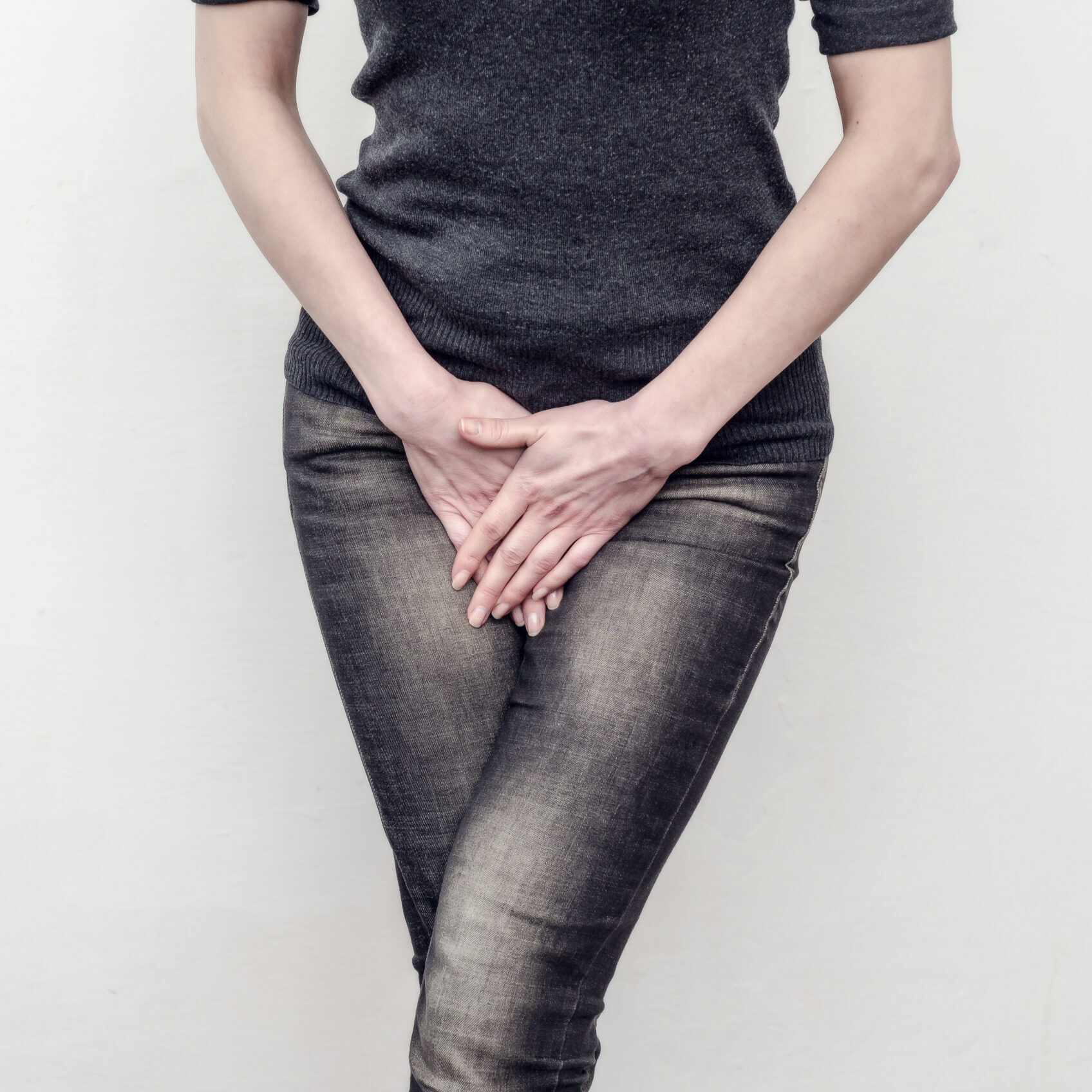Urinary incontinence isn’t something to be ashamed of. Many women face it, and with the help of an expert, many women also overcome it.

Urinary incontinence is defined as the unintentional or involuntary loss of control of the bladder. Incontinence is caused by problems with muscles and nerves that help to retain or release urine.
The issue is more common in women than in men and far more common in older women than younger. It is estimated that 10% of women have urinary incontinence under age 65 compared with 35% of women over 65.
Urinary incontinence can be merely bothersome or quite debilitating. For some women, their quality of life can be decreased due to the anxiety of the risk of public embarrassment or the risk of incontinence during sexual activity.
Stress incontinence, urge incontinence & overactive bladder
Although urinary incontinence comes in many forms, there are a few types that are more common than others.
- Stress incontinence is urine leakage when pressure is exerted on the bladder such as with coughing, sneezing, laughing or exercise. Pregnancy and childbirth, obesity, chronic heavy lifting or straining can damage the pelvic floor muscles and ligaments that support the bladder. If these structures weaken, the bladder can move downward, or prolapse, toward the vagina. This can prevent the muscles of the urethra that carries urine from the body from closing as tightly as they should, causing leakage.
- Urge incontinence is urine loss following a sudden urge to urinate. This is caused by inappropriate contractions of the bladder. There are often triggers that cause urge incontinence such as the sound or feel of running water, seeing the toilet, attempting to unlock your door (key in the lock syndrome), or anxiety.
- Overactive bladder (OAB) is when abnormal nerve signals are sent to the bladder at inappropriate times. This may or may not cause leaking. It is normal to void eight times or less in a 24-hour period, but with overactive bladder the urge to void may occur much more often. It can also cause women to wake up multiple times per night to void.
- Mixed incontinence is a combination of stress and urge incontinence.
Marsha Merry, WHNP-BC
 Marsha is a board-certified women’s health nurse practitioner (WHNP-BC) with more than 30 years of experience in gynecologic care, menopausal management, urinary incontinence and chronic pelvic pain.
Marsha is a board-certified women’s health nurse practitioner (WHNP-BC) with more than 30 years of experience in gynecologic care, menopausal management, urinary incontinence and chronic pelvic pain.
Schedule an Appointment
Diagnosing incontinence
Your healthcare provider can evaluate what type of urinary incontinence you have in a variety of ways. Diagnosis will begin with a detailed medical history. Identifying the pattern of leaking throughout the day will help determine the type of incontinence. Keeping a bladder diary over the course of three-to-four days can also be helpful in forming a diagnosis.
A physical examination will be performed to assess for prolapse and neurologic responses. A bladder scan may be performed to determine how well the bladder is emptying. A urinalysis may also be performed to check for an infection in the urinary tract. If an adequate diagnosis cannot be made, a referral to a specialist such as a urologist or urogynecologist would be the next step.
Things you can do to treat the bladder leakage & leaking urine of incontinence
A woman can often take steps herself to help get urinary incontinence under control and even cure it. And we always recommend things a woman can do on her own first.
The first two things a woman can do to treat and even help prevent urinary incontinence is to maintain a healthy weight and to avoid smoking. Seek help from your OB-GYN on weight loss and with smoking cessation if necessary.
Stress incontinence can respond well to muscle strengthening exercises such as Kegels. This is a simple exercise that involves squeezing and relaxing the pelvic floor muscles. Pelvic floor muscles are like any other muscle in the body and can be made stronger with exercise. Your healthcare provider can determine if you are performing the exercises appropriately.
Urge incontinence (also called overactive bladder) can respond well to revisions in diet. Foods and beverages that are acidic, such as citrus, pineapple, cranberries, vinegars and tomato sauces, can act as bladder irritants increasing the feelings of urgency. Other bladder irritants include caffeine, artificial sweeteners, carbonated beverages, highly spiced foods and alcohol.
Constipation can also affect how the bladder stores and empties urine. Normal bowel function can be maintained by drinking a sufficient amount of fluids and consuming an adequate amount of fiber. Exercise can also help move stool through the intestine.
A daily stool softener can be taken for chronic constipation. Chronic constipation that does not respond to these treatments should be brought to the attention of a healthcare provider.
Other treatments: pessary, physical therapy, Botox, neuromodulation & surgery
If the steps above don’t work, or don’t work completely, our providers can help with other treatments. We discuss these options with each woman and decide on the appropriate treatment together.
Physical therapy
If a self-exercise regimen with Kegels is unsuccessful, a referral for physical therapy may be warranted. Physical therapists (PTs) who specialize in female pelvic floor rehabilitation may employ various treatment options such as biofeedback or electrical stimulation of the pelvic floor muscles.
Neuromodulation
For urge incontinence not responding to behavioral treatments or medications, neuromodulation may be useful in some patients. Neuromodulation involves stimulating the nerves to the bladder to interfere with the nerve signals. This can be accomplished with an external intermittent stimulator or a surgically implanted stimulator.
Pessary
A support device called a pessary can be fitted by a healthcare provider. Pessaries come in various sizes and shapes depending on the woman’s pelvic floor anatomy. This device is sometimes successful in decreasing or eliminating incontinence.
Medications & Botox
A number of medications can reduce feelings of urgency; however, some can cause side effects such as dry mouth, dry eyes and constipation. Botox injections into the bladder wall can decrease bladder contractions but can also cause temporary urinary retention.
Surgery
There are also surgical procedures available to reposition and stabilize the bladder and urethra. Substances such as collagen may be injected around the urethra as a bulking agent, which increases the urethra’s resistance to leakage. Surgical procedures can be very successful in reducing or even curing stress incontinence.
Pregnancy and bladder control
Many women experience urinary incontinence during pregnancy and after giving birth. Due to the fetus putting pressure on the bladder, it is not unusual to leak urine between voids or when coughing, laughing or sneezing during pregnancy. It can be beneficial for a woman to be of normal weight before becoming pregnant and to not gain more than the recommended amount of weight during pregnancy to decrease the amount of pressure on the pelvic floor.
Practicing Kegel exercises prenatally and after giving birth will strengthen the pelvic floor muscles and may help improve bladder control and decrease leaking. The good news is that no amount of urinary incontinence needs to be tolerated. With multiple treatment options available, incontinence does not need to be a part of daily life after giving birth.
